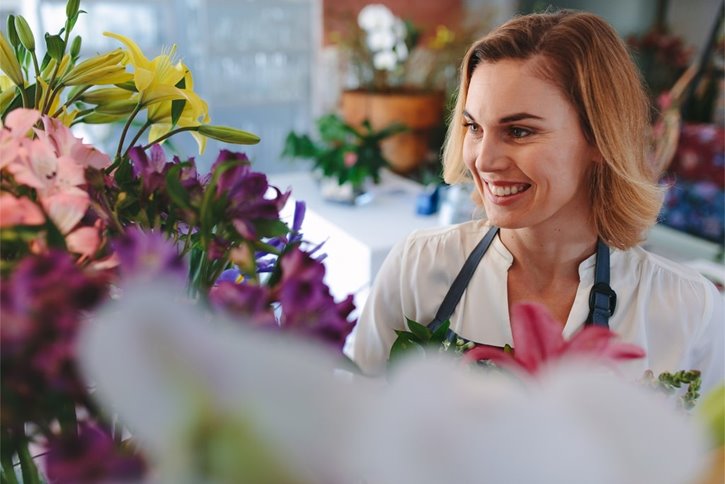Start smoothly as a secondary occupation
Starting as a secondary occupation is, in terms of administration and formalities, quite similar to starting as a self-employed person as a main occupation. However, there are a number of conditions that will determine whether you actually start as a secondary or main occupation. You can’t choose for yourself with which status to start.
Discover the difference between main and secondary occupation
Conditions for starting as a secondary occupation
You can start as a self-employed person as a secondary occupation if you meet one of the following conditions:
- You are an employee as your main occupation - you work more than 50%.
- You receive sickness or invalidity allowances
- You are unemployed
- You are following an IBO course
- You are retired
Want to make sure you meet all requirements?
Employee as a main occupation
As an employee:
- You work at least 50% as an employee.
- For example, you work as an administrative employee in a company, but on weekends you work as a caterer.
As an interim worker:
- You work at least 235 hours per quarter.
As a civil servant:
- You are employed at least 50%, with your activity lasting for at least 8 months or 200 day.
- As a civil servant, you also need the explicit consent of your employer.
As a teacher:
- As a statutory teaching staff member, you must work at least 60% of a full-time post.
- If you have not (yet) been appointed on a permanent basis, 50% will suffice.
Sickness or disability allowances
If you receive sickness or disability allowances, you can still start as a self-employed person as a secondary occupation, if your incapacity for work amounts to at least 50%. However, you will need approval from the advising doctor.
Attention: the sickness or invalidity allowance received must also be at least equal to the minimum pension of a single self-employed person.
Unemployed - Springboard to Self-employment
As an unemployed person, you may always start a self-employed activity as a secondary occupation in the artistic sector without losing your benefits. If you are not starting out in the artistic sector, you can use the 'Springboard to Self-employment' to retain your unemployment benefits for a longer period of time. You will then start as a self-employed person as a secondary occupation for 12 months, while retaining your unemployment benefits.
That way, you can start your own business with peace of mind.
Individual vocational training (IBO)
If you follow an individual vocational training (IBO), you can also start as a secondary occupation.
Note: if you receive a productivity bonus and possibly a training allowance, instead of unemployment benefits, you automatically start as a self-employed person as your main occupation.
Retired
You may earn extra income while being retired. How much you can still earn depends on a number of elements such as your age, professional career and the type of pension you receive.
Self-employed as a secondary occupation: costs
As a secondary occupation, start with a company as if you were to start as a self-employed as a main occupation.
These are:
If you start with a company, you will be faced with many more costs, but this is rather exceptional for a self-employed person as a secondary occupation.
Read more about the costs of setting up a company
Start-up costs as a secondary occupation
Most of the costs go towards setting up your business:
- Registration with the Crossroads Bank for Enterprises (CBE). This is done by the Securex Business Counter and costs €111,50 (no VAT applicable).
- VAT number activation is also done by the Business Counter and costs €60 (excl. VAT).
Tip: In cities such as Bruges and Ghent, the city reimburses your registration with the CBE.
If you start in a liberal profession, you don’t need a VAT number.
Social security contributions
As a self-employed person as a secondary occupation, you also pay social security contributions. However, these are considerably lower than when you start as a main occupation because you mainly contribute to social security via your employer or other main source of income.
You pay quarterly, i.e. four times a year. As you are not yet able to submit turnover figures in the first year, you pay a "flat-rate minimum contribution" of €100.39 per quarter.
Read more about social security contributions.
Your equipment
Of course, for some professions you need more equipment than for others and so you will have to buy this yourself. Read more about deductible professional expenses.
Additional insurances
Some self-employed persons as a secondary occupation require extra insurances. If, for example, your business is located in a building, you will need to subscribe to fire insurance. Also, better play it safe when it comes to expensive machines. Your accountant can tell you in advance which insurances are a must for you.
An accountant
Hiring an accountant is not mandatory. Much depends on the number of customers you have and on how complicated your invoicing process is. And perhaps also on how administratively organised you are. Reckon with a few hundred euros a year.
Accountants vary in price, so ask for different offers. Don’t just choose the cheapest accountant, but someone with whom you feel comfortable.
Deductible professional expenses for a secondary occupation
Sole proprietorships are the most common form of secondary occupation because they can be set up cheaply and quickly.
If this is also your case, or your preference, then the turnover of your additional earnings will be added to your income from your main occupation. This means that you will probably end up in the highest tax brackets of 45% or 50%.
It’s therefore important to incur expenses in carrying out your secondary occupation. Think about buying your equipment, but perhaps you could also charge for using an office in your home? That way, you will lower your profits and pay fewer taxes. However, it's important that you make a sufficient profit first, otherwise there is little point in deducting professional expenses.
VAT exemption for a secondary occupation
It’s not the case that you automatically don’t have to charge VAT in a secondary occupation. In theory, every self-employed person must charge or pay VAT.
The advantage of being self-employed is that you don’t actually pay VAT. Your customers pay VAT to you and you regularly pass that amount on to the VAT administration, whereby you can deduct the VAT that you yourself had to pay on purchases. This makes it a zero operation for you.
There is a good chance that you will be able to make use of the VAT exemption as a secondary occupation. This is allowed if your annual turnover is below €25,000. In that case, you can apply for a VAT exemption.
The advantage:
- You don’t have to charge your customers VAT. That saves you a lot of administrative work.
The disadvantages:
- You pay VAT on your own purchases because you cannot offset it.
- You must draw up and submit an annual list of your VAT liable customers (VAT list).
If you exceed the threshold of €25,000 in annual turnover, you lose the exemption and you must charge VAT. So don't lose sight of this.
A secondary occupation is a safe way to turn your passion into money
As you can read above, the costs and administrative procedures are not too high. Especially, if you have a sole proprietorship that is VAT-exempt. The threshold to start is thus very low.
Depending on what exactly you are going to do, you may run greater risks. Fortunately, you still have your main job to fall back on if things go wrong. And then, you can learn valuable lessons from this experience for the next time!






